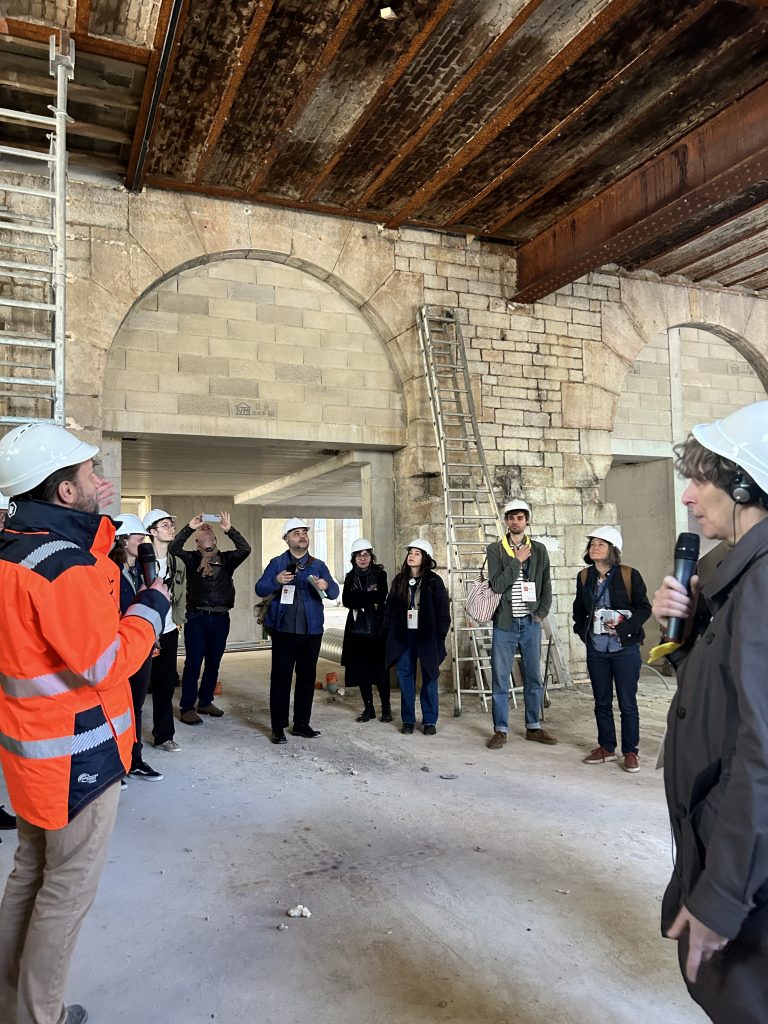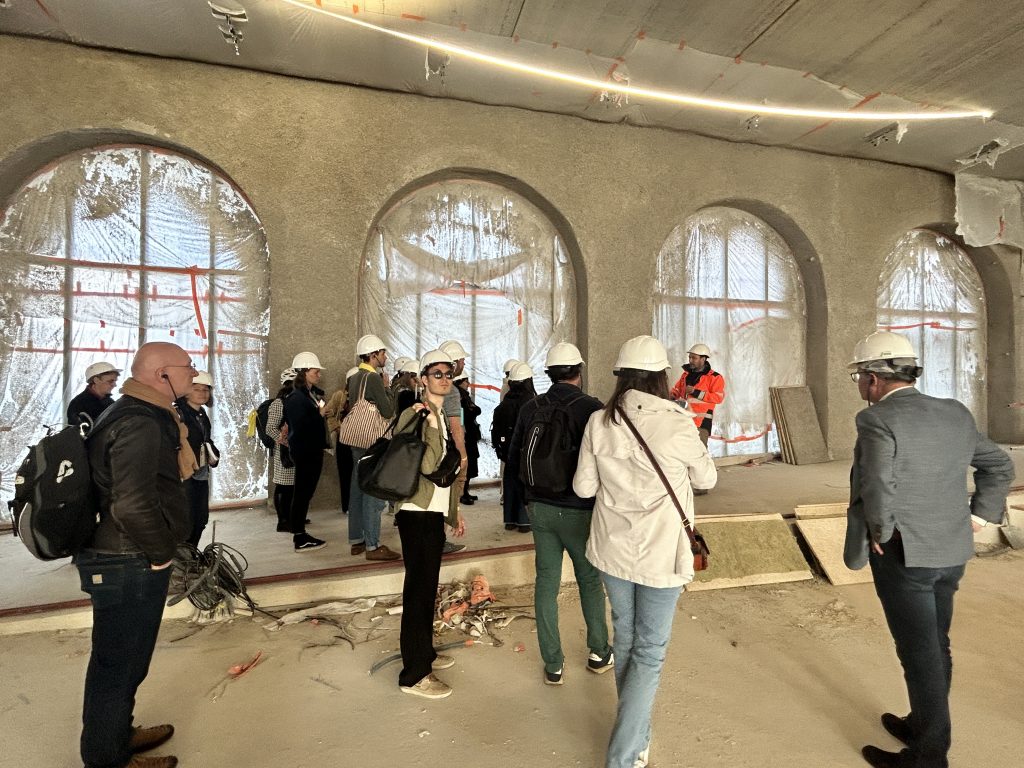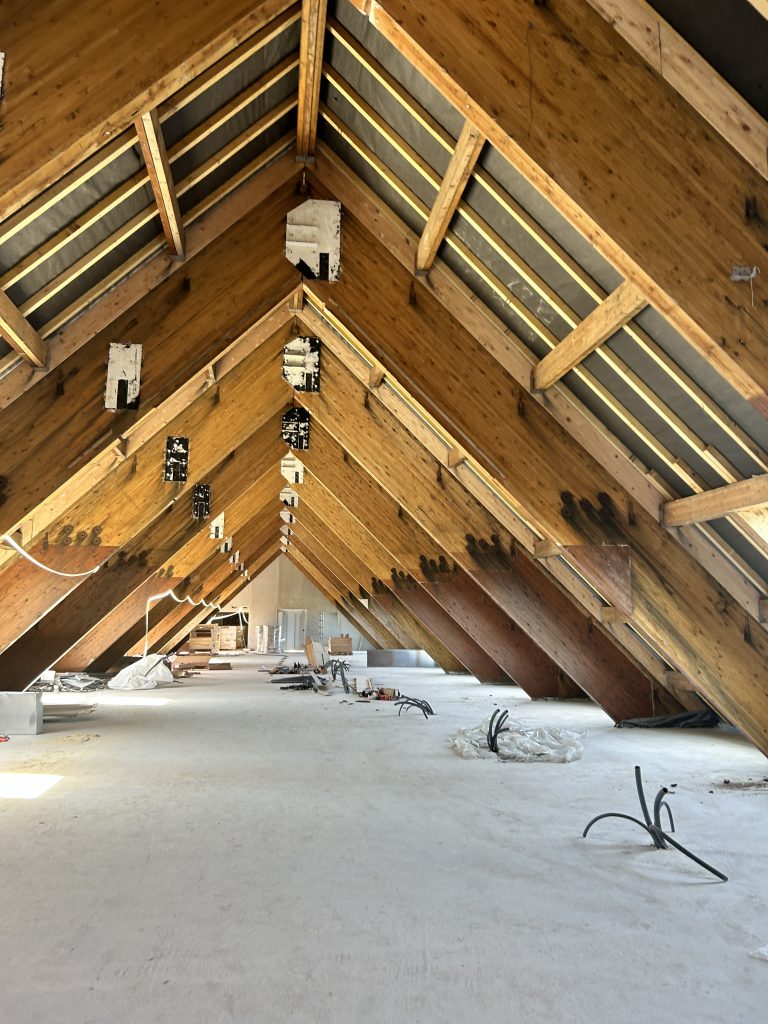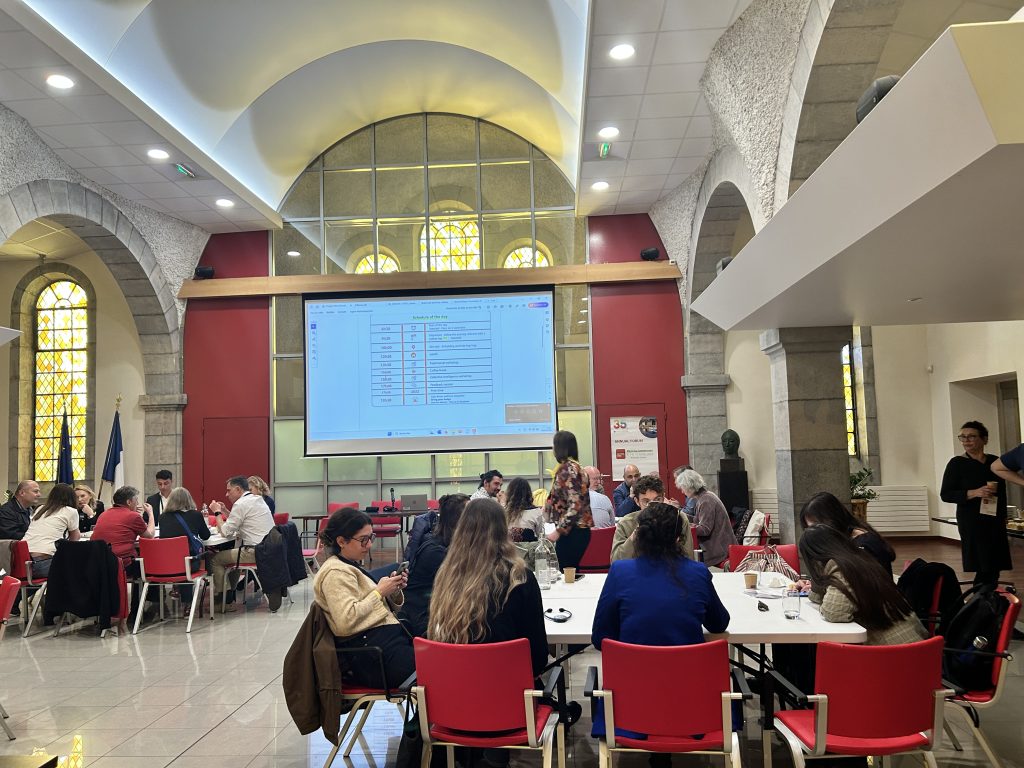Rethinking our cities: how Besançon is embracing the circular economy
During the Energy Cities journey "Doing better with less", we experienced the transformative power of sufficiency measures
Can the steel, glass and wood of a demolished building find a new life?
What to do with big, but vacant spaces when the rent costs are soaring?
Let’s look around us: what’s already available? How can we match the supply with the demand?
Let’s be creative and think of new business models that can meet people’s needs while, at the same time, preserving the environment. Old models, indeed, have proved to be too expensive, unfair, and polluting. Sufficiency measures are the right answer, as we experienced in person during the journey Doing better with less organised by Energy Cities within its Forum on 9 April.



Putting the circular economy at the heart of innovation
The Arsenal site in Besançon (France) is a great example of an innovative approach, an out-of-the-box business model that is creating new jobs, giving vacant public spaces back to citizens, and creating a new sense of belonging in harmony with the local area.
Energy Cities’ members had the opportunity to visit it and listen to the inspiring stories of the people who are transforming the Arsenal from an ex-military site and hospital into a vibrant learning and creative hub. This is indeed part of a multi-year real estate strategy plan with the long-term objective of creating a learning city within the centre of Besançon, including a residential area, new faculties and offices.
The circular economy is the key concept guiding this ambitious project. “63% of waste comes from the construction sector. That’s why it is an important pillar of the circular economy,” explained Dominique Marie, Circular Economy Strategy and Action Plan Project Manager at Bourgogne Franche-Comté Region. “The region is currently funding 20 relevant projects and has set up working groups composed of different professionals to identify new methodologies, business models, and good practices. We have created a materials library to help people find what they need. Indeed – he concluded – second-hand materials help save 60% of emissions.”
Annaïck Chauvet – Deputy Mayor in charge of energy transition, buildings and technical resources for the city of Besançon – highlighted that €200 billion of public funding has been allocated to move things forward. Of course, those who apply have to ensure accessibility, good working conditions, preservation of natural resources and biodiversity, and high standards.
Breathing new life into abandoned public spaces
Hôp Hop Hop is an association of local architects and urban planners, now counting 3,500 members, founded in 2017 to answer a need: too many vacant spaces and too many people looking for a place to set up innovative businesses and create.
They rethought the Arsenal, a public space of 2,000 sqm vacant and available, converting it into a place where professionals can work, gather, and exchange ideas. A bar, several workshops and training sessions have found their home here. That’s just a temporary occupation, waiting for the building to become a residential and office space. The activities run – from a second-hand shop to artistic and DIY workshops – allow the association to be almost financially independent and pay its employees. The rooms are rented out at a low price. In return, the 62 tenants work a few hours for the association. Alice Gauthier, Hôp Hop Hop Coordinator, explained that the project’s success has gone beyond their expectations. Now, the association needs to decide how to further sustain the project. In any case, the goal has been achieved: to rehabilitate a building to give it back to citizens. Its success is inspiring other similar projects around the world.



Doing better with less: renovating with second-hand materials
In collaboration with Grand Besançon Métropole and the Rectorate of Besançon, Sylvain Dousse – Building Engineer at the University of Franche-Comté Region – is carrying out a large-scale experiment in the circular economy as part of the Arsenal renovation project. The project is transforming an 8,000 sqm vacant building into a university site expected to house the faculties of sociology, languages, and performing arts in eight months. Another aim is to create a communication and training tool to support learning about the circular economy.
“We prefer to invest in people rather than in materials,” said Mr Dousse.
Several companies replied to the public call and accepted the challenge of rethinking their business in a circular economy way, thus developing new professions such as careful dismantling, refurbishment of materials and equipment, storage, and redistribution.
Mr Dousse is reusing as much material as possible and is sourcing it locally. Dismantled buildings are a source of steel, wood, glass, and furniture that can find a new life. For example, the façade of this modern building is made of steel and glass from other buildings located in the same area. The wood that once composed the roof is now used for the flooring of soundproof rooms. If new material is needed, then it must be ecological. For instance, using ill wood instead of virgin wood. Saving energy is also important: wood is preferred because it is naturally insulating, while windows are everywhere to take advantage of natural light.
“To make renovation cheaper, we need to make it simple. Ecodesign makes it more efficient and cheaper” concluded Mr Dousse.

How circularity can foster a fair economy
After the visit, it was time for members to share experiences and get inspired by each other.
We explored what sufficiency concretely means for local authorities, where we stand at the EU level, and the important role played by recycling. As ACR+ explained, efficient waste management is not enough – we need to produce less and reuse what’s already available. Only by envisioning waste management within a circular economy approach can we ensure climate change mitigation.
Brussels Capital Region and the municipality of Utrecht were the protagonists of the testimonial workshop Building circular cities: municipal leadership in reuse and sufficiency.
François Dewez, Head of the Professional Transition Department, and Pietro Fragapane, Project Manager – both working at Bruxelles Environnement – told us about the policies supporting circular practices. Among the initiatives launched, they mentioned:
- Shifting Economy, committed to increasing financial aid for companies embarking on the transition process.
- Renolution, aimed at revolutionising building renovation in Brussels, with a strong emphasis on energy efficiency and sustainability.
- Be Circular, supporting entrepreneurs, SMEs and organisations that develop innovative circular economy projects contributing to a more sustainable, local, and resilient Brussels economy.
Mirjam Scholtens, European Funding and Collaborations Advisor at the municipality of Utrecht, told us how the city is stimulating an attractive climate for circular entrepreneurship by providing space, funding, and programmes. Joining EU projects is a great way to not only have access to funds but also to learn from other cities. Utrecht is setting up a reuse centre and is involved in several EU projects aiming to foster the circular economy, also in the construction sector. As an example, she mentioned the Werkspoorkwartier – once an abandoned area, that has now become a cultural hub, home to several entrepreneurs and artists.
To conclude this sufficiency journey, local authorities and energy experts took part in a collective intelligence workshop aiming to address the challenges and difficulties encountered by some cities in developing and implementing their projects.
Curious to learn more about the last edition of the Energy Cities Forum and the other journeys? Read our wrap-up article and stay tuned for updates on the 2026 edition!

